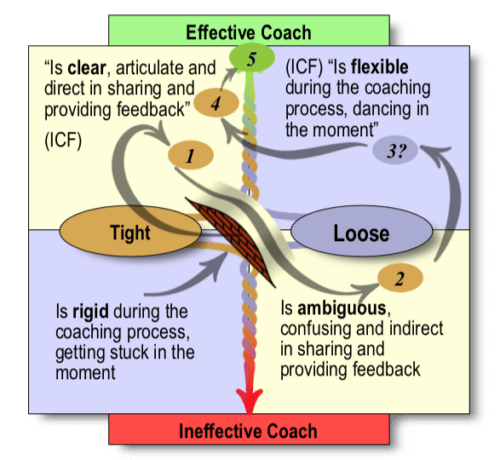There is no energy unless there is a tension of opposites; hence it is necessary to discover the opposite to the attitude of the conscious mind.
Carl Jung
Everything in life is a polarity. Life and death are polarities. To some death is preferable to death; to many it is not.
When he was condemned to drink hemlock and die, Socrates observed, “We shall see that there is great reason to hope that death is a good; for one of two things—either death is a state of nothingness and utter unconsciousness, or, as men say, there is a change and migration of the soul from this world to another. I say that to die is gain.”
Barry Johnson, author of Polarity Management provides a powerful process to move from our normal ‘either/or’ to a ‘both/and’ thinking approach. In our experience 80% of coaching issues are about dilemmas, paradoxes or polarities. Client wonders what do I choose amongst these options, this or that. Most coaches help explore the good and the bad, the pros and cons, of the options in front of the client and choose the one where the scales go down. As Frost famously observed in his ‘Road less traveled’ that does not work too well.
When we choose one road over another, either because it is less or more travelled, the grass always looks greener on the one we didn’t choose, mixing metaphors a bit. Whatever we choose, we have regrets about what we didn’t opt for based on mismatched expectations and results. The answer lies in choosing the middle path or seeking the Third Truth.
Fons Trompenaars talks about this Third Truth as Reconciliation in a cross cultural context. You may like to read about his wisdom on reconciling differences.
Polarity Management is about seeking the Third Truth. Johnson lists these as 5 key steps in his process.
Polarity Map Step 1 – Seeing
Seeing is about looking at the dilemma as two polarized options. In the map on core coaching competencies the polarized options are between coach being flexible and dancing in the moment with the client and being direct, clear and articulate in providing feedback. One can identify several such polarities in various fields of our activity.
Using the polarity approach we can look at how to integrate these seeming opposites rather than focus on differentiation.
Polarity Map Step 2 – Mapping
One can then map the upsides (values) for each competency in the upper half of the polarity map and downsides (fears) arising out of over focusing in these competencies, with eight parameters as seen in the ICF coaching competency map analysis.
From one of the competencies, ‘being clear’ as 1, one can look at what happens when one is not being clear in space 2, to what space would that be as ‘being flexible’ in space 3, and then integrating with ‘being clear’ in space 4 to arrive at being an effective coach in space 5.
Being direct and clear may lead to issues if over done, especially without permission from and trust with client. Coach can become judgmental and solution oriented, making assumptions on what is best for client. This may also lead to a structured approach that may not address situational exceptions leading to stuckness and rigidity.
Being flexible may lead the coach to be ambiguous, indirect, confusing and therefore ineffective, if overdone. Coach may not share what is intuitively noticed fearing that client may take it amiss. Coach may not challenge the client if contradictions are noticed. Coaching is not about nurturing; it is about supporting. Supporting may need to be tough love.
What is needed is an integration of the polarities.
Polarity Map Step 3 – Assessing
One can then assess the frequency of how these values and fears are displayed in the coach client situations; is this a pattern, once a while, or never. The current reality emerges more clearly leading to understanding of potential challenges and opportunities in leveraging this polarity to our advantage.
Polarity Map Step 4 – Learning
Stakeholders reflect on their experiences with the polarities to validate through data, what were consequences, and insights based on these.
Polarity Map Step 5 – Leveraging
Identify actions steps to maximize upsides by linking with other polarities in the system and minimize downsides of polarities through detection of early warnings.
Look at the polarity map as an infinite loop, which can optimize the system continuously.
Applications of Polarity
There are infinite applications of the polarity concept in every walk of our life and work.
From a coaching perspective some of the polarities are:
- Direct Vs Flexible
- Growth Vs Present Moment
- Challenge Vs Support
Within personalities we can look at the Jungian polarities of:
- Introverted Vs Extraverted
- Sensory Vs Intuitive
- Thinking Vs Feeling
From a leadership perspective these could be:
- Task Vs People
- Directive Vs Guiding
- Strategic Vs Tactical
In an organizational context polarities can be:
- Centralized Vs Autonomous
- Hierarchical Vs Empowered
- Business Verticals Vs Skill Horizontals
Please do watch an hour long interaction with Barry Johnson at the Coacharya Coaching Colloquium during International Coaching Week 2018 at https://youtu.be/urxvVZ2kp_M



